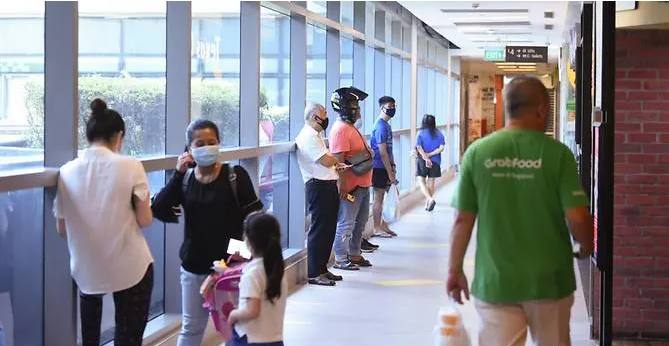KEEP IN TOUCH
Subscribe to our mailing list to get free tips on Data Protection and Cybersecurity updates weekly!






COVID-19: Govt developing wearable contact tracing device, may be distributed to everyone in Singapore

SINGAPORE: The Government is developing and will “soon” roll out a portable and wearable contact tracing device, Minister-in-charge of the Smart Nation initiative Vivian Balakrishnan told Parliament on Friday (Jun 5).
“If this portable device works, we may then distribute it to everyone in Singapore,” he said. “And I believe this will be more inclusive, and it will ensure that all of us will be protected.”
Dr Balakrishnan was responding to a question by Member of Parliament for Sembawang GRC Vikram Nair, who had asked if there were plans to make it mandatory for people to download the TraceTogether contact tracing app.
The TraceTogether app works by sending Bluetooth signals to each other when in close proximity, making it easier for authorities to conduct contact tracing when a user tests positive for COVID-19.
The contact tracing device will “achieve the same objectives” as TraceTogether, but without the need for a smartphone, said Dr Balakrishnan, adding that contact tracing has become more essential with more out and about post-“circuit breaker”.
However, the Government has decided not to make the download of the app compulsory as it does not work equally well across different smartphone operating systems, Dr Balakrishnan said.
Apple’s iOS suspends Bluetooth scanning when the app is running in the background, meaning users have to leave it in the foreground, without using other apps.
“We’ve had repeated discussions at both the technical and policy level with Apple, but we have not yet been able to find a satisfactory solution,” Dr Balakrishnan said.
Nevertheless, a total of 1.5 million users have downloaded the app, about one-fifth of Singapore’s population. Dr Balakrishnan called this figure “encouraging”, given that downloading the app is voluntary.
Authorities have also made it compulsory for migrant workers living in dorms to download the app, and Dr Balakrishnan urged more people to do the same.
Dr Balakrishnan said the app has improved the contact tracing process by generating a preliminary list of close contacts that need to be quarantined, reducing the time taken to isolate these contacts and therefore the risk of the infection being spread.
“Notwithstanding the limitations of coverage today, the data from TraceTogether has already been a helpful, additional tool for our contact tracers, especially when it is used in combination with other data sources,” he said.
The app has also been recently updated to register the user’s NRIC or FIN number, he added, allowing authorities to establish the identity of close contacts quicker.
DATA CONFIDENTIALITY
Dr Balakrishnan reiterated that personal data is stored on the user’s mobile phone and is strictly used for contact tracing, only to be accessed by the Ministry of Health (MOH) when a user tests positive for COVID-19.
“There are safeguards including encryption in place to protect this from malicious hackers and the data that’s older than 25 days will be automatically deleted from your phone,” he added.
“If the close contact data is required for contact tracing, only a small group of authorised officers in MOH will have access to it.”
Dr Balakrishnan called quick and accurate contact tracing a necessity, particularly now that Singapore has exited the circuit breaker.
“If everyone is at home, in fact the need for contact tracing is minimal,” he said. “But now that we have more people moving about, going to work, there will be more occasions when more people will have more close interactions with each other.”
Dr Balakrishan stressed that contact tracing is a professional skill that ultimately depends on human judgment, with technology as an enabler.
“If we can reduce the incidence of clusters by better and faster contact tracing, then we can avoid having to reintroduce restrictive circuit breaker measures in the future,” he said.
“I hope that all members of the public will work with us to achieve this.”